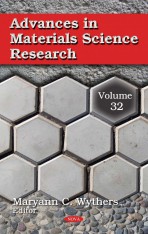abstract
It is extremely difficult to produce pure amorphous bioglasses from a quaternary system containing sodium, as they are readily prone to crystallisation, leading to inhomogeneity in the final glass matrix. Moreover, the aging time required in sol-gel synthesis is the main barrier to using the sol-gel method widely, compared with other preparation methods such as the melt quenching method. Typically, ageing times of one week or more are required to achieve an amorphous glass. Similar problems exist in the synthesis of bioceramics with sol-gel, in which unwanted phases may form irreversibly, or the desired phases may form with large crystallite size, as a result of slow ageing. To overcome this problem, we have developed an innovative, rapid sol-gel method for producing bioglass and bioceramic nanopowder, which avoids the conventional lengthy ageing and drying processes. This is 200 times quicker in comparison to conventional aqueous sol-gel bioglass preparation, and 100 times quicker than standard sol-gel bioceramic methods. In this chapter, we summarise the existing work on conventional sol-gel synthesis of such bioglasses and bioceramics, as well as some other, more rapid methods. We then give details of the novel sol-gel protocol developed by us to synthesise a quaternary glass (with incorporation of Na2O) in only 1 h. A comparative study of sol-gel derived glasses made by this novel rapid route using rotary evaporator drying, and a lengthy conventional route using oven drying and aging, revealed that the two methods produce stabilised bio-glasses with virtually identical behaviour and properties. We also expand on using this rapid method to produce pure hydroxyapatite (Ca10(PO4)6(OH)2, HAp) bioceramics, obtained after only 1 h with no prior ageing step. The rapid process favoured the formation of smaller/finer nanopowders, while producing pure HAp virtually identical to that obtained from the slow conventional drying method. Indeed, both rapidly dried powders for HAp and bioglass possessed enhanced properties such as smaller crystallite sizes, larger surface areas, and the silica network in the glass matrix exhibits a lower degree of polymerisation. All these enhanced properties should in turn result in increased bioactivity.
authors
Basam A. E. Ben-Arfa and Robert C. Pullar



